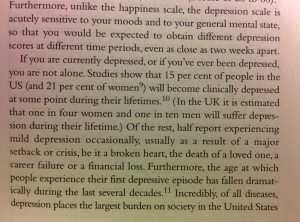This session goes back the topic of relationship and moves on to the topic of self-esteem.
How can we cope with conflict in relationship?
- Asking positive question – What am I grateful for in my partner?
- Asking positive question – What is wonderful about our relationship? What’s working?
- Communicating about positive events (win-win)
When Tal talked about a feeling of “low self-esteem” and “punish by success”, I was surprised that I had the exact feeling before! However, I never really quested why because I thought I have a high level of requirements for myself. This session is so important for me to understand it.
Like happiness, we shouldn’t ask the question “Am I happy or unhappy?”, we should ask “How can I become happier?” Self-esteem is often misunderstood. The question we should ask is not “Do I have high or low self-esteem?” but rather “How can I enhance my self-esteem?”
Self-esteem is defined by Nathaniel Branden as “the disposition to experience oneself as competent to cope with the basic challenges of life and as worthy of happiness.” Both competency and worthiness are essential in self-esteem.
Self-esteem is not a product of empty reinforcement. Only praise no matter what to children won’t help their self-esteem in a long run. It actually reduces their motivation to work, makes them unrealistic, and makes them less happy than they potentially could have been.
Pseudo self-esteem is the pretence of self-efficacy and self-respect without the reality.
Self-esteem is founded in the reality, in actual performance, actual success, in actual practices. It’s a product of hard work.
Self-esteem is not associated with success, not associated with social status, and not associated with money. Tal has done in-depth research on the paradox of self-esteem based on Jane Loevinger’s work and presented an epigenetic model as following:
- The first level of self-esteem – dependent self-esteem
- The second level of self-esteem – independent self-esteem, not contingent on others
- The third – sense of self
|
The worthiness |
The competency |
| Dependent self-esteem |
Constant evaluation of what other people think of me
Determined by others
Look for constant approval |
Compare oneself to others |
| Independent self-esteem |
Evaluate oneself according to one’s own standards
Determined by own evaluation
Looking for beautiful enemies to improve self |
Not compare one to others, but compare to oneself;
Pursuing self-concordant goals |
| Unconditional self-esteem |
Not contingent
Confident enough to not involve in evaluation |
Interdependent
Is not “don’t care” |
Everyone has some dependent self-esteem, some components of independent self-esteem, and some components of unconditional self-esteem. The question is of degree and the model is epigenetic.
Interesting research findings:
- Sometimes people who associate too much self-esteem are arrogance, conceit, and narcissism.
People and their work:
- Ralph Waldo Emerson’s article on friendship in 1841.
- Robert M. Pirsig’s book Zen and the Art of Motorcycle Maintenance: An Inquiry into Values
- Shelly Gable – positive psychology and relationship
- Jane Elsner, Barbara Heilman and Amanda Horn – 2×2 matrices of communication and relationship: passive active; destructive constructive
- Albert Bandura, Germain Duclos, Stanley Coopersmith, Nathaniel Branden – definition of self-esteem
- John Carlton – two important character of the most successful people: asking questions and believe themselves.
- Daniel Goleman – emotional intelligence
- Nathaniel Branden – self-esteem anxiety, six practices for the cultivation of self-esteem (integrity, conscious, self-acceptance, self-responsibility, self-assertiveness, purpose)
- Richard L. Bednar and Scott R. Peterson – self-esteem as a core of underlying course, paradox of self-esteem
- Roy Baumeister – self-esteem and narcissism
- William James, Charles Cooley, George Mead – dependent self-esteem
- Nathaniel Branden, Abranham Maslow, Carl Rogers – independent self-esteem
- Maltimore Devano – dependent self-esteem
- David Schnarch, Abranham Maslow – unconditional self-esteem

